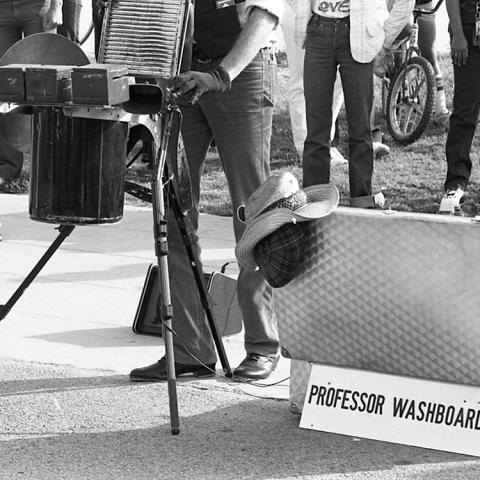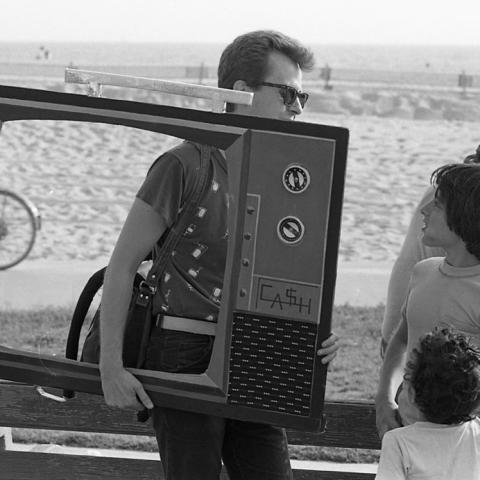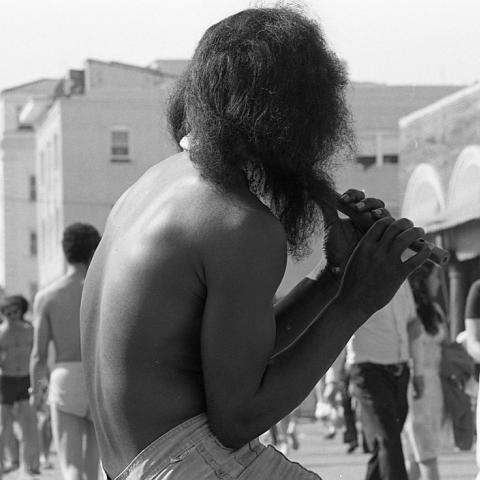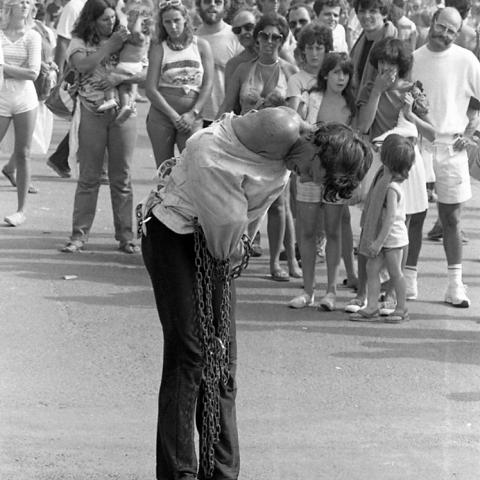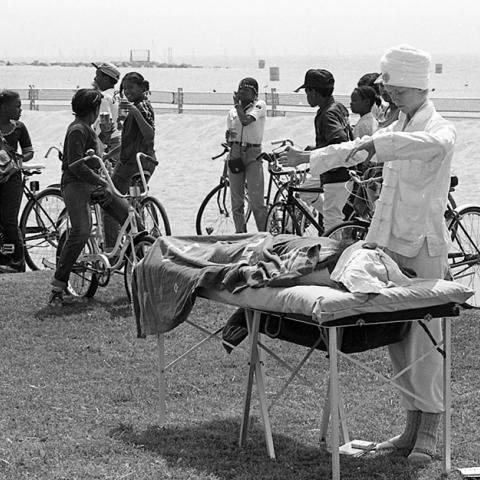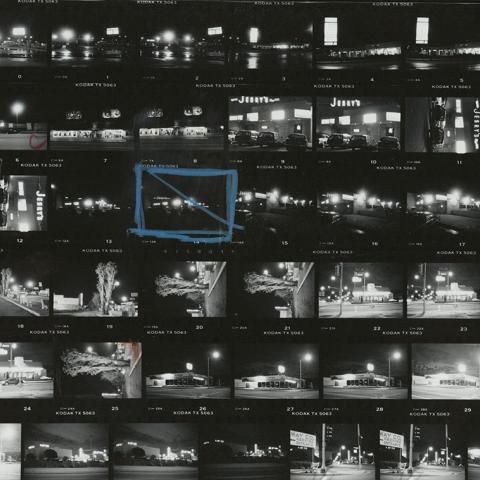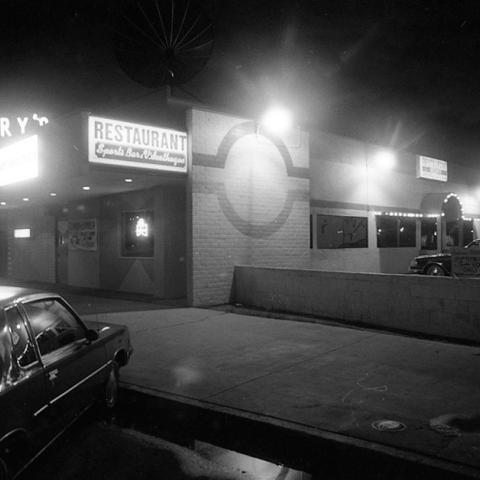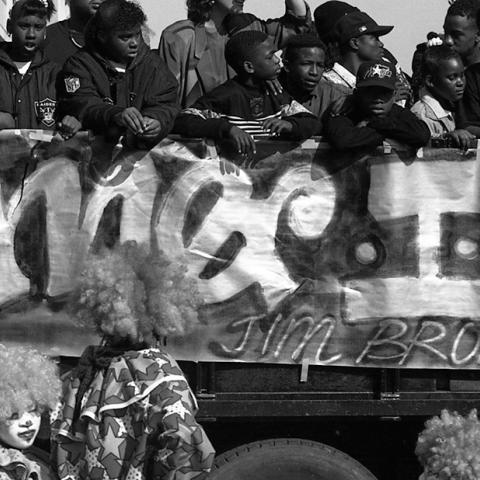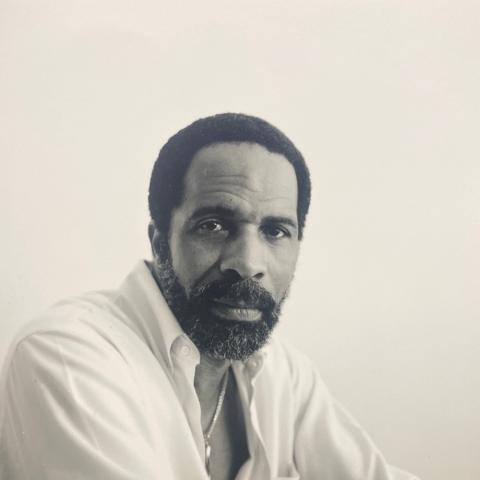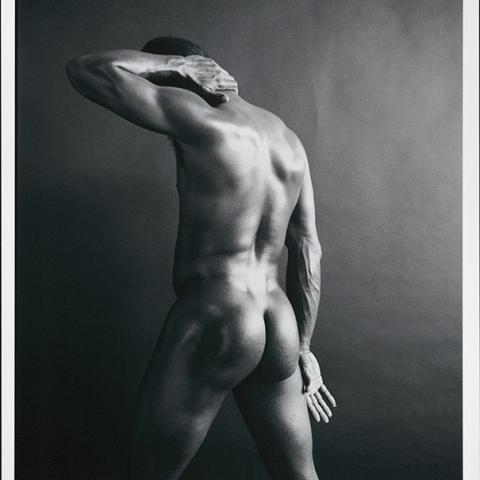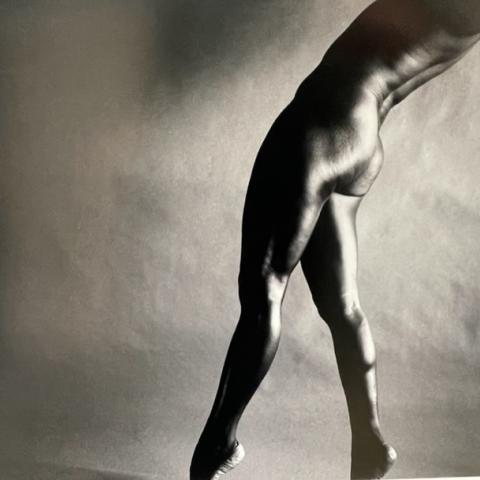Venice Beach and Black L.A. According to Calvin Hicks
October 22, 2024
Calvin Robert Hicks was born in West Virginia in 1941. In 1968, he moved to Los Angeles with his wife and two daughters, and began his 40-year career as a county probation officer. Pursuing photography in his free time, 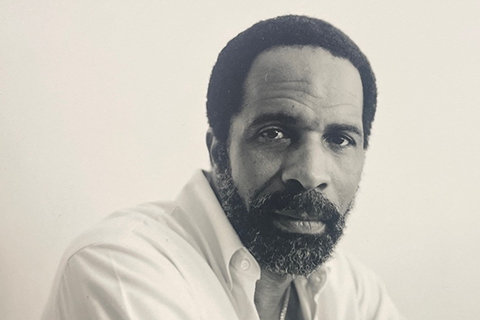 Hicks became an important community photographer and mentor who co-founded exhibit spaces and photography groups dedicated to local Black photographers because of the difficulty they experienced staging shows at largely white-dominated exhibit spaces in L.A. In the early 1980s he participated at the Visionist Gallery with the Bunker Hill Arts League in downtown Los Angeles, and from 1984 to ~2001 he co-directed the Black Gallery with the Black Photographers of California at Santa Barbara Plaza in Baldwin Hills/Crenshaw. His collection, the Calvin Hicks Photograph Collection, largely consists of 35mm and 120mm black-and-white negatives, contact sheets, and prints.
Hicks became an important community photographer and mentor who co-founded exhibit spaces and photography groups dedicated to local Black photographers because of the difficulty they experienced staging shows at largely white-dominated exhibit spaces in L.A. In the early 1980s he participated at the Visionist Gallery with the Bunker Hill Arts League in downtown Los Angeles, and from 1984 to ~2001 he co-directed the Black Gallery with the Black Photographers of California at Santa Barbara Plaza in Baldwin Hills/Crenshaw. His collection, the Calvin Hicks Photograph Collection, largely consists of 35mm and 120mm black-and-white negatives, contact sheets, and prints.
Hicks kept returning to Venice Beach from the 1970s to 2000s to photograph street performers, beachgoers, locals, and tourists against a backdrop of the boardwalk, palm trees, and the ocean. When Abbot Kinney founded the “Venice of America” in 1905, he aimed to please the masses with an amusement park, a pier, and canals with gondolas. In the 1950s, bodybuilding became a permanent fixture at the original Muscle Beach, a stone’s throw away in Santa Monica. Starting in the 1960s, affordable rent and a spirit of individuality and counterculture drew the creative-minded to live there. From the 1970s to 1990s, skating and punk rock gained popularity locally, while in the 1980s the crack epidemic hit Los Angeles badly, including Venice. 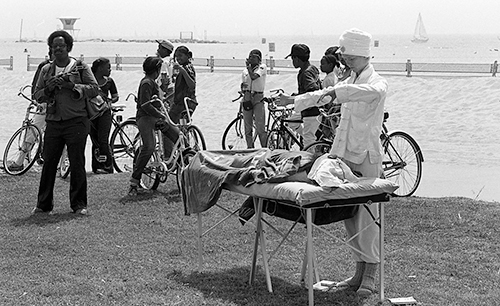 Hicks’ street photography documents the wide range of attractions and distractions that garner onlookers’ curiosity, such as the grungy escape artist, spiritual processions, makeshift folk instruments, and the outdoor acupuncturist. One recurring motif in his images is the sand pyramid. He often juxtaposes the human form on the beach with pyramids, dwarfed by the human, and tricks the eye into a desert scene. The images altogether show what continues to keep Venice Beach an eclectic and edgy photographic subject over time.
Hicks’ street photography documents the wide range of attractions and distractions that garner onlookers’ curiosity, such as the grungy escape artist, spiritual processions, makeshift folk instruments, and the outdoor acupuncturist. One recurring motif in his images is the sand pyramid. He often juxtaposes the human form on the beach with pyramids, dwarfed by the human, and tricks the eye into a desert scene. The images altogether show what continues to keep Venice Beach an eclectic and edgy photographic subject over time.
Hicks's images are also found in the collection of Roland Charles, his friend and co-director at the Black Gallery. They collaborated on a project, “Black L.A.,” with several other photographers that eventually culminated into the 1992 publication, Life in a day of Black L.A. : the way we see it : L.A.'s Black photographers present a new perspective on their city, and exhibits on the same theme locally and abroad. Hicks said of the work, 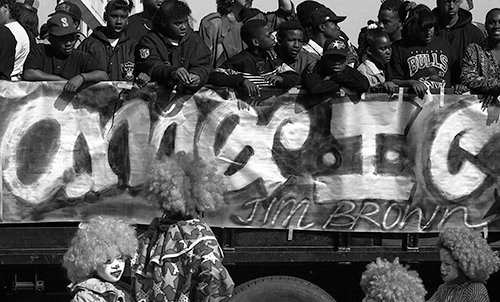 “This is an attempt to depict the once sublime, ridiculous, sacred, and profane aspects of our lives. All of these things make up any community, and when viewed as a collective whole an excellent picture of our cultural tapestry emerges.” (143) Charles’ collection contains two rolls Hicks shot. The 1988 roll includes exterior night shots of Jerry’s Flying Fox, a Black-owned and -operated nightclub now defunct, and the May Company Building, both in Baldwin Hills/Crenshaw. The 1992 roll documents the annual Kingdom Day Parade (a.k.a. MLK or King Day) that takes place in the same neighborhood with crowds of all ages. The parade began in 1985 in honor of Martin Luther King, Jr.’s birthday, life, and legacy, and remains to this day a well-attended and respected community tradition.
“This is an attempt to depict the once sublime, ridiculous, sacred, and profane aspects of our lives. All of these things make up any community, and when viewed as a collective whole an excellent picture of our cultural tapestry emerges.” (143) Charles’ collection contains two rolls Hicks shot. The 1988 roll includes exterior night shots of Jerry’s Flying Fox, a Black-owned and -operated nightclub now defunct, and the May Company Building, both in Baldwin Hills/Crenshaw. The 1992 roll documents the annual Kingdom Day Parade (a.k.a. MLK or King Day) that takes place in the same neighborhood with crowds of all ages. The parade began in 1985 in honor of Martin Luther King, Jr.’s birthday, life, and legacy, and remains to this day a well-attended and respected community tradition.
Portraits and nudes are another major body of work in the Hicks collection. Hicks’ portraits exhibit character by his subjects showing a range of poses and getting more comfortable as the session progressed. Only a few subjects are identified in the collection. As for the nudes, scanned from large prints, forms with hidden faces sculpted by light and shadow captivate the scene. His treatment of the sinuous and dynamic Black body in black-and-white showcases Hicks’ fine art flair and attention to texture and tone.
Donald Bernard spoke of Hicks, his friend and fellow photographer, as never able to reach his potential due to life obstacles (work and family), but that he was a great photographer. Hicks retired from the county in 2008. He died in 2012 after a long battle with cancer. He had two daughters and three stepchildren. A previous post on Black L.A. referring to Roland Charles and Calvin Hicks is Crenshaw Boulevard: the Heart of Black LA.
Image Gallery
Post tagged as: bradley center, photographs, los angeles
Read more Peek in the Stacks blog entries